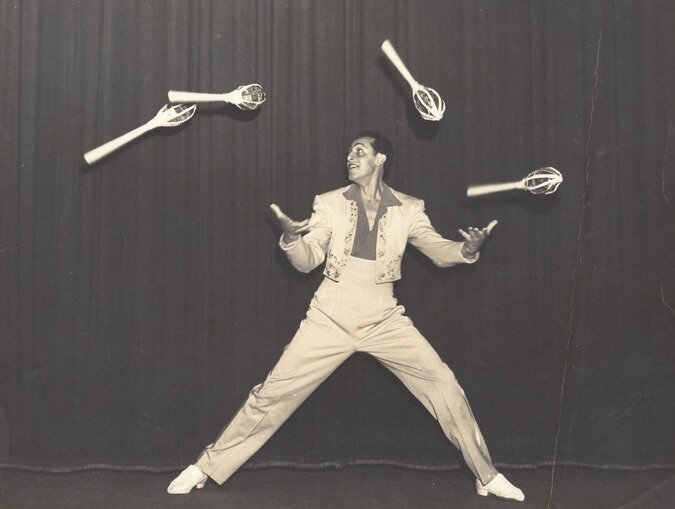 As a small child, I was impressed by those who could effortlessly toss several objects into the air and continue their co-existent flight for elongated periods of time. I marveled in particular those especially talented people who could do this with a wide variety of objects, which might include a bowling ball, a scarf, a small wooden block and an apple—as but one set of seemingly incompatible items. I would even watch in amazement as the all too rare performer would do this with highly dangerous items like flaming torches, chainsaws and knives.
As a small child, I was impressed by those who could effortlessly toss several objects into the air and continue their co-existent flight for elongated periods of time. I marveled in particular those especially talented people who could do this with a wide variety of objects, which might include a bowling ball, a scarf, a small wooden block and an apple—as but one set of seemingly incompatible items. I would even watch in amazement as the all too rare performer would do this with highly dangerous items like flaming torches, chainsaws and knives.
Now grown up, and while I continue to be thoroughly entertained by these remarkable individuals, I have come to see them in a uniquely similar role as many of my peers, colleagues and others who lead their organizations. Indeed, I have come to see that jugglers are very much like the leaders of today in that they both seek the opportunity to be provided multiple elements that they know they can put into action.
You see, leaders—like jugglers—are dedicated to their own development so that they can handle more participants or members in a group as well as more challenging responsibilities. It is also very important to recognize that jugglers and leaders also share the specific talent of being a gifted facilitator by putting a member on the right path to success alongside all other members of the group with minimal direction. Their earliest efforts in leadership (or juggling), come with a small number of responsibilities, and as they grow and hone these skills, new and more complex pieces are quickly added.
This is not to suggest that all leaders are akin to taking up daily games of catch with power tools, fire or sharp objects—and we responsibly ask that you don’t try this at home—but it’s certainly true that a leader’s daily work does include widely different members in an organization; each of whom have their own characteristics and values, and each of whom require and respond well to brief direction and support to become part of and remain essential to achieving a common goal.
I find this very different from managers, whom I often find are those who look for where to take control and handle a team. Managers typically prefer to have a good grip on what they’ve been provided, and then basically pull or push their organization toward the next location. This is not to suggest these organizations are wholly unwilling to go to somewhere else or new—they just don’t progress unless the manager remains in direct contact with them to see that specific movement is made.
Some managers have organizations that not only provide clear handles for them to hold, many come designed so that little personal effort—aside from just enough energy by the manager—is necessary. Think of a modern suitcase: A handle, often adjustable to a comfort level for the holder, with wheels at the bottom so that it doesn’t need to be carried.
While it is true that sometimes, especially early on as they are developing their skills, the leader may make unintentional errors that could lead to the organization’s activity to temporarily stop. But it is the leader who learns and adjusts quickly to these experiences and incorporates them into the very next start of a group activity.
Though a manager and his or her organization may also stop suddenly from moving forward, there is a vastly different mindset between the two. While the organization waits for the manager to once again pull or push them toward their next destination, it is the leader whose first thought and first actions are to get all members of that organization active again at the same time.
That’s very different from the leader, who chooses to support and keep active all members—usually while staying mobile. It is the leader who juggles many participants, and who trusts themselves as well as those they are guiding, and it is the leader who can cause a member to go higher and still be there to support that member upon his or her return.
It’s interesting how we can handle more if we don’t try to hold on too long.



